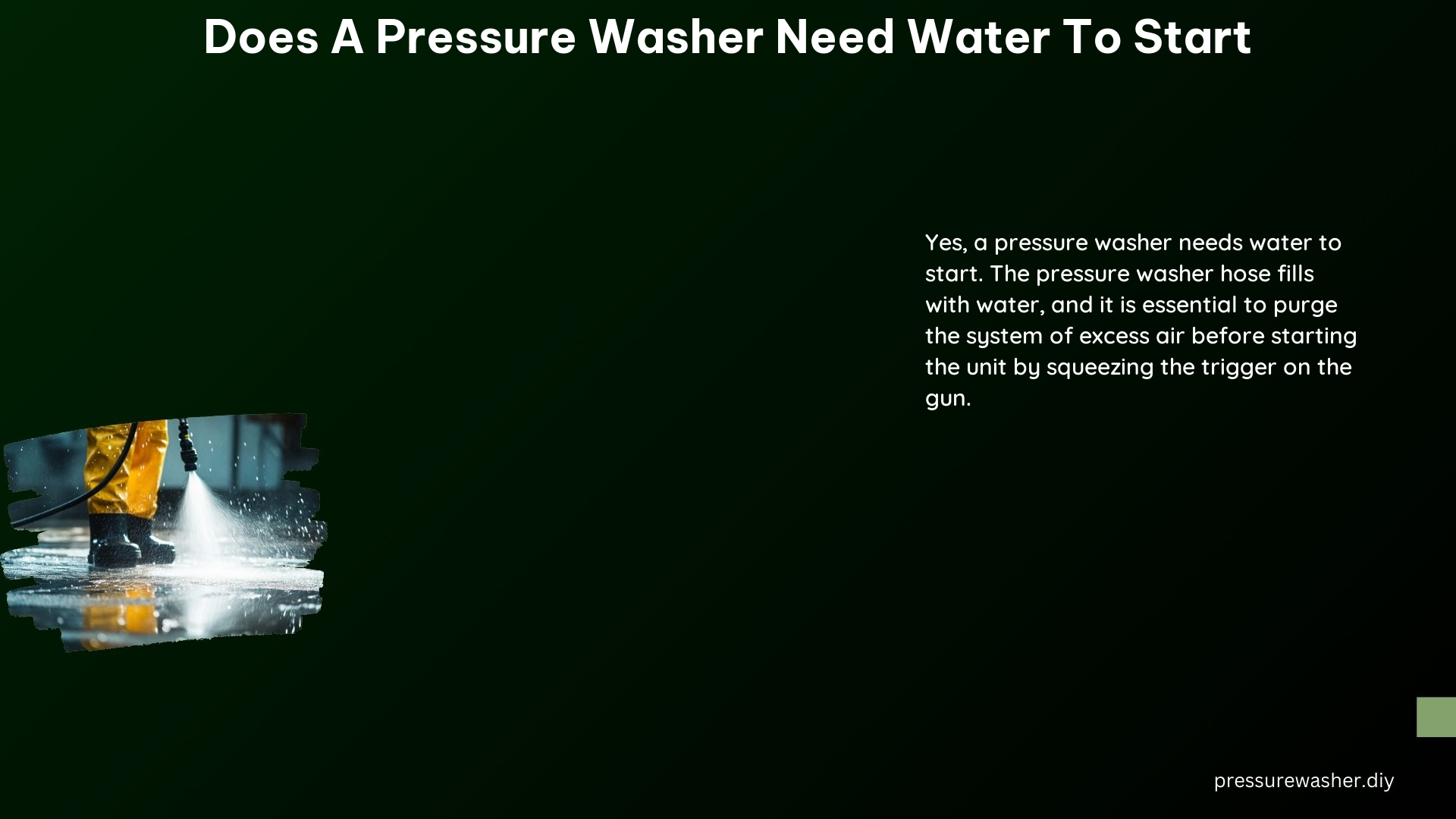A pressure washer is a powerful cleaning tool that uses high-pressure water to remove dirt, grime, and other stubborn stains from various surfaces. However, a common question that arises is whether a pressure washer needs water to start and function properly. The answer is a resounding yes, as a pressure washer cannot operate without a reliable water supply.
Water Supply: The Lifeblood of a Pressure Washer
The primary function of a pressure washer is to generate high-pressure water, which is then directed towards the surface being cleaned. This high-pressure water is created by a powerful pump that draws water from a source and forces it through a small nozzle, resulting in a concentrated, high-velocity stream.
Without a steady water supply, the pressure washer’s pump and motor would be severely damaged, potentially voiding the warranty and leading to costly repairs or replacements. The water not only provides the necessary pressure but also acts as a coolant, preventing the internal components from overheating and failing.
Purging Air: Ensuring a Smooth Start

Before starting a pressure washer, it is crucial to purge the system of any excess air. This is typically done by squeezing the trigger on the gun, which allows the hose and pump to fill with water. Failing to do so can result in air pockets within the system, which can cause damage to the pump and other components.
The process of purging air is essential for several reasons:
- Pump Protection: Air pockets can cause the pump to cavitate, which can lead to premature wear and tear on the internal components.
- Consistent Pressure: Removing air from the system ensures that the pressure washer can maintain a consistent, high-pressure water stream, which is essential for effective cleaning.
- Smooth Operation: By eliminating air pockets, the pressure washer can start and operate smoothly, without any sputtering or interruptions in the water flow.
Setup and Connection: Ensuring a Proper Water Supply
The setup process for a pressure washer involves connecting a garden hose to the water inlet on the machine and ensuring that the water strainer is in place and free of debris. This water strainer plays a crucial role in protecting the pump from any foreign particles that could potentially clog or damage the internal components.
Once the water supply is connected, the high-pressure hose is then attached to the water outlet on the pressure washer. This high-pressure hose is responsible for delivering the high-velocity water stream to the cleaning surface.
It is important to note that the water supply should be of sufficient volume and pressure to meet the requirements of the pressure washer. Insufficient water flow can result in cavitation, which can lead to pump damage and reduced cleaning performance.
Special Cases: Pressure Washers with Built-in Water Tanks
While most pressure washers require a direct water supply, there are some specialized models that come equipped with built-in water tanks. These units, often referred to as portable car washers or water tank car washers, are designed for specific applications where a direct water source may not be readily available, such as washing vehicles in areas with limited water access.
These pressure washers with built-in water tanks can operate without a direct water connection, as the water is drawn from the onboard tank. However, it is important to ensure that the tank is filled with clean water before use and that the system is properly primed to prevent any air pockets or issues with the pump.
Industry Standards: Utilizing the Customer’s Water Supply
In the pressure washing industry, it is common practice to use the customer’s water supply, especially for residential jobs. This is because the water usage is typically not a significant concern for customers, and it is more practical than hauling water tanks or relying on the pressure washer’s built-in water tank.
By using the customer’s water supply, pressure washing professionals can focus on the cleaning task at hand, without the added burden of managing their own water source. This approach also helps to minimize the environmental impact, as the pressure washer is not consuming additional water resources.
Damage from Running Without Water
Running a pressure washer without water, even for a short period, such as 5-10 seconds, can cause significant damage to the pump and motor. Without water flowing through the pump body, the internal components can quickly overheat, leading to premature wear and tear, and potentially causing the unit to seize up or fail entirely.
The consequences of running a pressure washer without water can be severe, as it can void the warranty and result in costly repairs or replacements. It is crucial to ensure that the pressure washer is always connected to a reliable water source and that the system is properly purged of air before starting the machine.
In conclusion, a pressure washer cannot function without a steady water supply. The water is essential for creating the necessary pressure, cooling the internal components, and preventing damage to the pump and motor. By understanding the importance of water in the operation of a pressure washer, users can ensure the longevity and optimal performance of their cleaning equipment.
Reference:
– Pressure Washer Water Requirements
– How to Use a Pressure Washer Safely
– Pressure Washer Maintenance Tips
